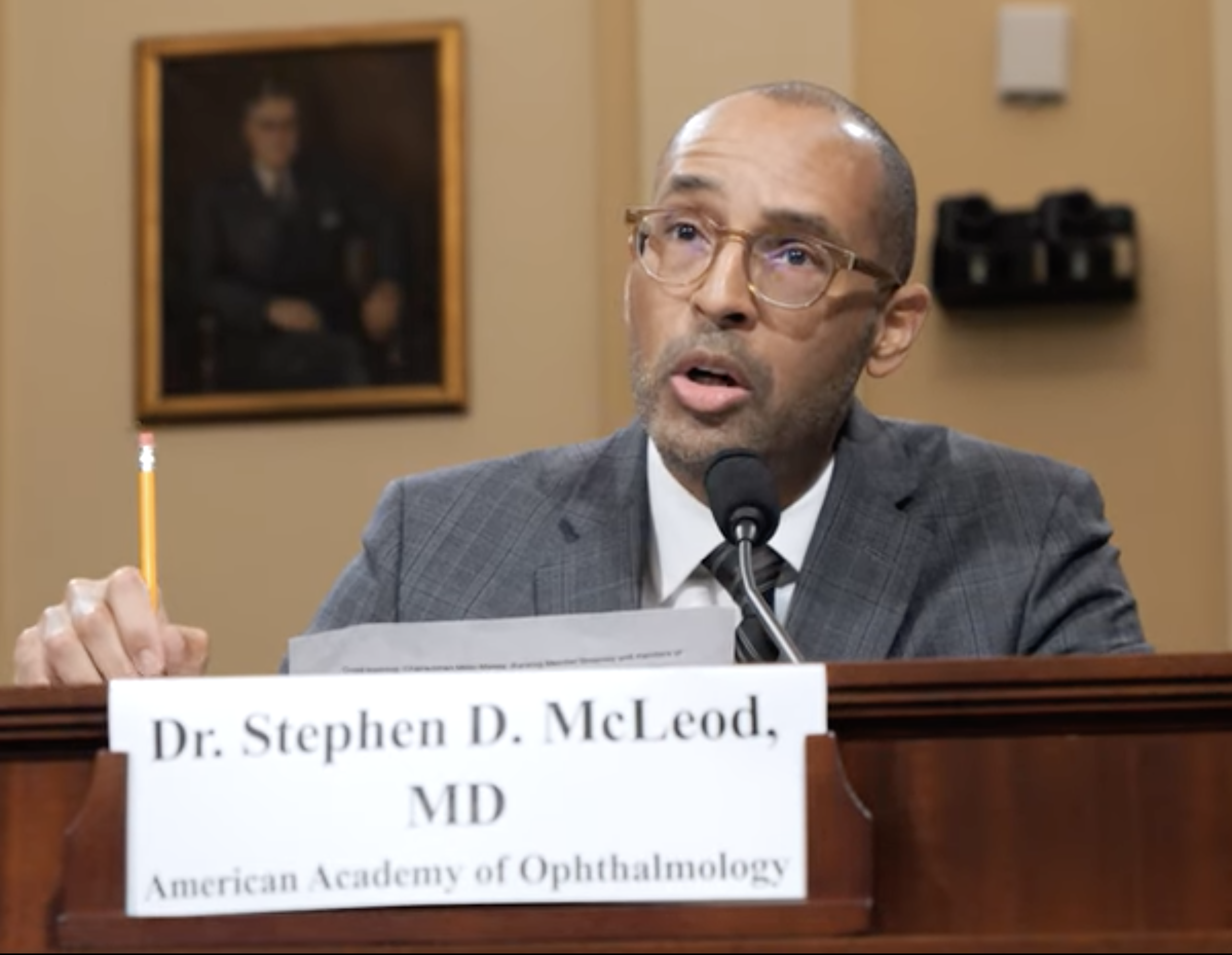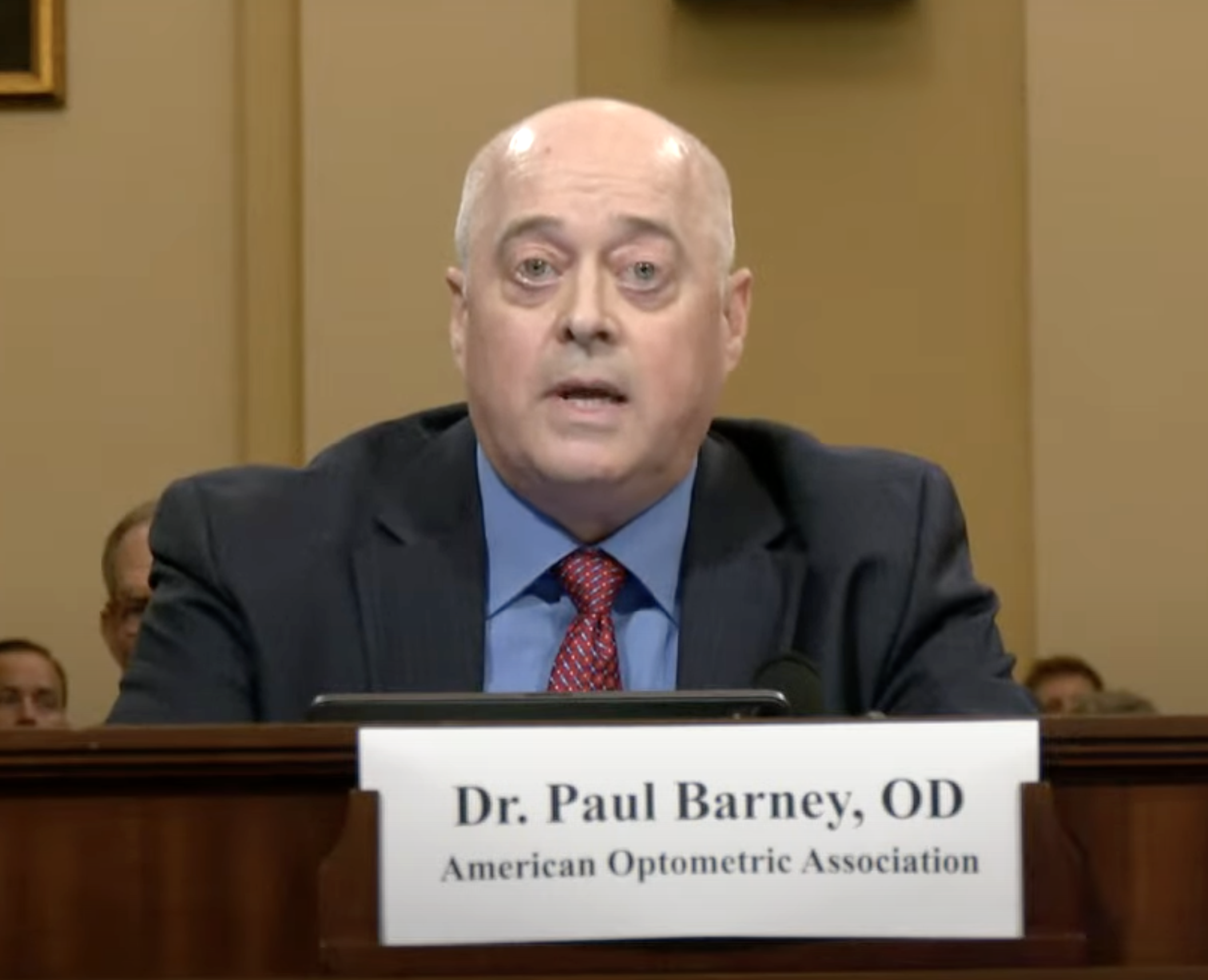The Department of Veterans Affairs is the country’s largest integrated healthcare network, with nearly 1,300 facilities extending from coast to coast, most of which offer eyecare services. VA optometrists account for roughly 75% of the total eyecare visits each year.
While 10 states and counting now recognize more advanced procedures, including laser eye surgery, as part of optometry’s scope of practice, doctors in the VA must abide by Department regulations regardless of individual laws in their practicing state. Aiming to rectify this, the VA has been developing new national practice standards for optometry and more than 50 other health specialties through what’s known as the Federal Supremacy Project. The Department is proposing to allow its ODs to practice to the full extent of their training and ability—that is, based on the scope of practice of each provider’s state of licensure. VA doctors with the proper certification would be allowed to perform laser and other types of eye surgeries, certain injections and lesion removal.
 |
| The Academy of Ophthalmology’s Stephen McLeod, MD, portrayed optometric training in advanced procedures as inherently flawed, evidence to the contrary notwithstanding. Click image to enlarge. |
Unsurprisingly, ophthalmology and organized medicine are pushing back against the initiative, as was evident by testimonies presented in a congressional hearing last Tuesday. Several members of the American Medical Association and American Academy of Ophthalmology (AAOphth) took the stand to argue against the proposed national standards, citing spurious claims about the training and abilities of today’s optometrists. On the stand to defend the proposed national practice standards was a member of the American Optometric Association (AOA) Board of Trustees, Paul Barney, OD, joined by 20 optometrists in the room from the AOA and Armed Forces Optometric Society (AFOS), who showed up to express their support.
Dr. Barney opened his remarks by pointing out that “roughly 40% of counties or county equivalents in the US have access to a doctor of optometry but not an ophthalmologist, and that number is expected to grow. American doctors of optometry are stepping up to fill that gap,” he said. “Optometry’s training and abilities have continued to advance alongside the evolution of technology, and today’s rigorous four-year optometry school curriculum focuses exclusively on the study of ocular health and vision care, laser and surgical education,” he explained.
 |
| Paul Barney, OD, of the AOA set the record straight before legislators on Tuesday, explaining that current educational curricula include laser and other surgical techniques at all colleges of optometry. Click image to enlarge. |
In his opening statement for the opposition, AAOphth CEO, Stephen McLeod, MD, argued that the reverse was true. “As medical doctors with extensive surgical training, indeed many thousands of hours devoted specifically to eye surgery, only ophthalmologists possess the expertise and the experience required to perform a surgery and to address the potential complications that might arise.” He went on to allege that “optometrists are not trained to safely perform surgical procedures; optometry training primarily focuses on the correction of refractive error, glasses and contact lenses and on primary eye care.” Dr. McLeod also described optometric surgical training as “vastly inferior.”
Refuting this claim, Dr. Barney noted that “contrary to what detractors say, laser and surgical care has been and continues to be taught at each and every school and college of optometry in the country.”
Flawed “Evidence” of OD Risk
Nathan Lighthizer, OD, associate dean at NSU Oklahoma College of Optometry, adds that today’s optometrists are trained to provide and manage a much broader range of care than Dr. McLeod had contended. “An optometrist’s four-year training covers every aspect of the eyeball—glasses, contact lenses, low vision, ocular disease, glaucoma, macular degeneration, dry eye and the list goes on and on” says Dr. Lighthizer. “Our students here in Oklahoma are trained at every level, from didactically in the classroom to hands-on laboratory training with lasers and simulated model eyes made and invented by ophthalmology. The students are then tested on both of those in the lab and in the classroom. They’re also doing procedures on live patients.”
In response to Dr. McLeod’s argument on the stand that many optometrists will be “performing a laser procedure for the first time on a human eye,” Dr. Lighthizer makes the point that this is the case for every doctor—optometrists and ophthalmologists alike.
“Eyecare providers and medical providers are not limited to doing only procedures that were available during our formal training (school and residency),” he says. “When new procedures come out, we don’t return to school or residency. Instead, we learn about the new procedures, study them, taking training courses on them, and it is natural and common to perform new procedures for the first time on a live patient. This is true for all providers, whether it is optometrists, ophthalmologists, dentists, internists, surgeons, etc.”
To further challenge the safety of optometry-performed procedures, Dr. McLeod cited evidence from a 2016 study published in JAMA Ophthalmology, which found that the likelihood of repeat SLT was nearly tripled when performed by an optometrist rather than an ophthalmologist. However, Marc Myers, OD, of Coatesville VAMC, along with Dr. Lighthizer, say these findings must be taken with a grain of salt, if they’re worth anything at all.
“The data in this study was obtained from 2008 to 2013, so it’s a decade old, which is ancient in the world of healthcare,” Dr. Myers points out. He adds that because SLT is a repeatable procedure, a second treatment does not mean the first attempt was unsuccessful or flawed; rather, the treatment may have been repeated because it would benefit the patient.
Dr. Lighthizer also points out that the study didn't look at any outcomes (e.g., % IOP reduction, effectiveness rate) or rate of complications; it only looked at when the code was billed. He echoes Dr. Myers, noting, “We have no idea if the procedures were being repeated more often by ODs because they were ineffective the first time, or if doctors were doing 180 degrees in one setting and then doing another 180 degrees weeks to months later.”
A more recent study published this past August observed the actual outcomes of optometry- vs. ophthalmology-performed laser surgery, this time assessing patients who received YAG capsulotomy rather than trabeculoplasty. No adverse reactions occurred in any of the patients who underwent the procedure by an OD and close to all patients reported subjective (99%) and objective (95%) improvements in vision.
At the Tuesday hearing, Dr. Barney presented additional evidence on the safety of optometrist-performed laser surgery. He noted that in Oklahoma, where ODs have been using lasers for nearly 30 years, “state officials report little or no patient complaints have resulted from this increase in scope of care. Further,” he continued, “malpractice rates for doctors of optometry in states with the authority to provide laser eye care and other contemporary procedures are roughly identical to rates and states without that authority, which highlights the safety and efficacy of this care provided by optometrists.”
The AOA expresses its gratitude to all of its members and ODs across the country who are advocating for these new national standards. “AFOS and AOA doctors and staff came together in a remarkable showing of what it means to fight for optometry and what is best for those who serve our country, with little notice,” says Lindsay Wright, OD, executive director of AFOS. “Following the hearing, we didn’t stop but instead spent the next day advocating with key legislators and leadership in DC, working to help them understand the significance of the national practice standards and Senate Bill 10 (CAREERS Act) for VA optometry.” Dr. Wright adds, “This is a long game and this incredible group of doctors demonstrated the value of perseverance and standing up for what is right.”
While advocacy efforts are in full swing, the process of securing these new regulations is far from over. The VA has yet to finalize the practice standards for optometry and many of the other health specialties in its system. Once completed, they will first need to pass the House of Representatives, where the bill currently resides, before heading to the Senate.
The AOA urges optometrists to contact their US Senators and House members to help communicate the importance of expanding access for America’s veterans.

